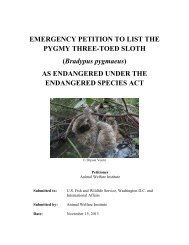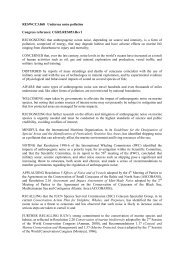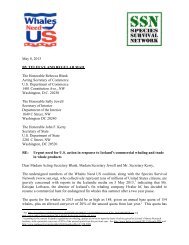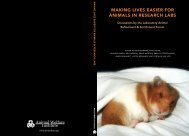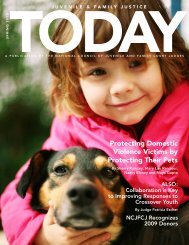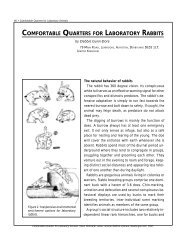A Common Bond - The National Link Coalition
A Common Bond - The National Link Coalition
A Common Bond - The National Link Coalition
- No tags were found...
You also want an ePaper? Increase the reach of your titles
YUMPU automatically turns print PDFs into web optimized ePapers that Google loves.
A <strong>Common</strong> <strong>Bond</strong>: Maltreated Children and Animals in the HomeHowever, when the child-animal bond is encouraged and developed, verytangible benefits accrue to children:• Children who form a bond with their companion animals score higheron measures of social competence and empathy (Poresky, 1990).• Ten-year-old children who had established strong bonds with their doghad significantly higher self-esteem, as well as greater empathy (Bierer,2001).• Children perceive their pets as special friends, important familymembers, and providers of social interactions, affection, and emotionalsupport (Triebenbacher, 1998).• Children who had a pet during their childhood were more empathetic,more prone to enter a helping profession, and were more orientedtoward social values than those without a pet (Vizek-Vidovic,Arambasic, Kerestes, Kuterovac-Jagodic, & Vlahovic-Stetic, 2001).• Children who had increased empathy scores because of theirrelationship with their pets also showed greater empathy toward people(Ascione & Weber, 1996).In addition to having an influence on an individual child’s development,animals can facilitate social interaction between children. When an animalis present, children are more likely to interact with a disabled child (Innes,2000). Additionally, when a dog was present in the classroom of first graders,they showed higher social integration and less aggression compared tochildren in a classroom without an animal (Hergovich, Monshi, Semmler, &Zieglmayer, 2002). Finally, animals can positively influence not only individualchildren but human communities. A study in Australia found that having acompanion animal provided more potential opportunities for interactionsbetween neighbors and that having a companion animal was associated withsome forms of social contact and interaction, and with perceptions of greaterneighborhood friendliness (Wood, Giles-Corti, & Bulsara, 2005).When the <strong>Bond</strong> BreaksWhen the common bond between children and animals is nurtured, manybenefits ensue—for children, animals, and the community. Nevertheless,sometimes the bond is ruptured by real or threatened violence in the familyor by serious neglect. Children, and the society in which they live, pay a highprice for witnessing violence—whether the violence was directed at a parent,sibling, or pet—and too often they pay it the rest of their lives. <strong>The</strong>se childrenare at higher risk for developing behavioral problems, failing academically, and5



